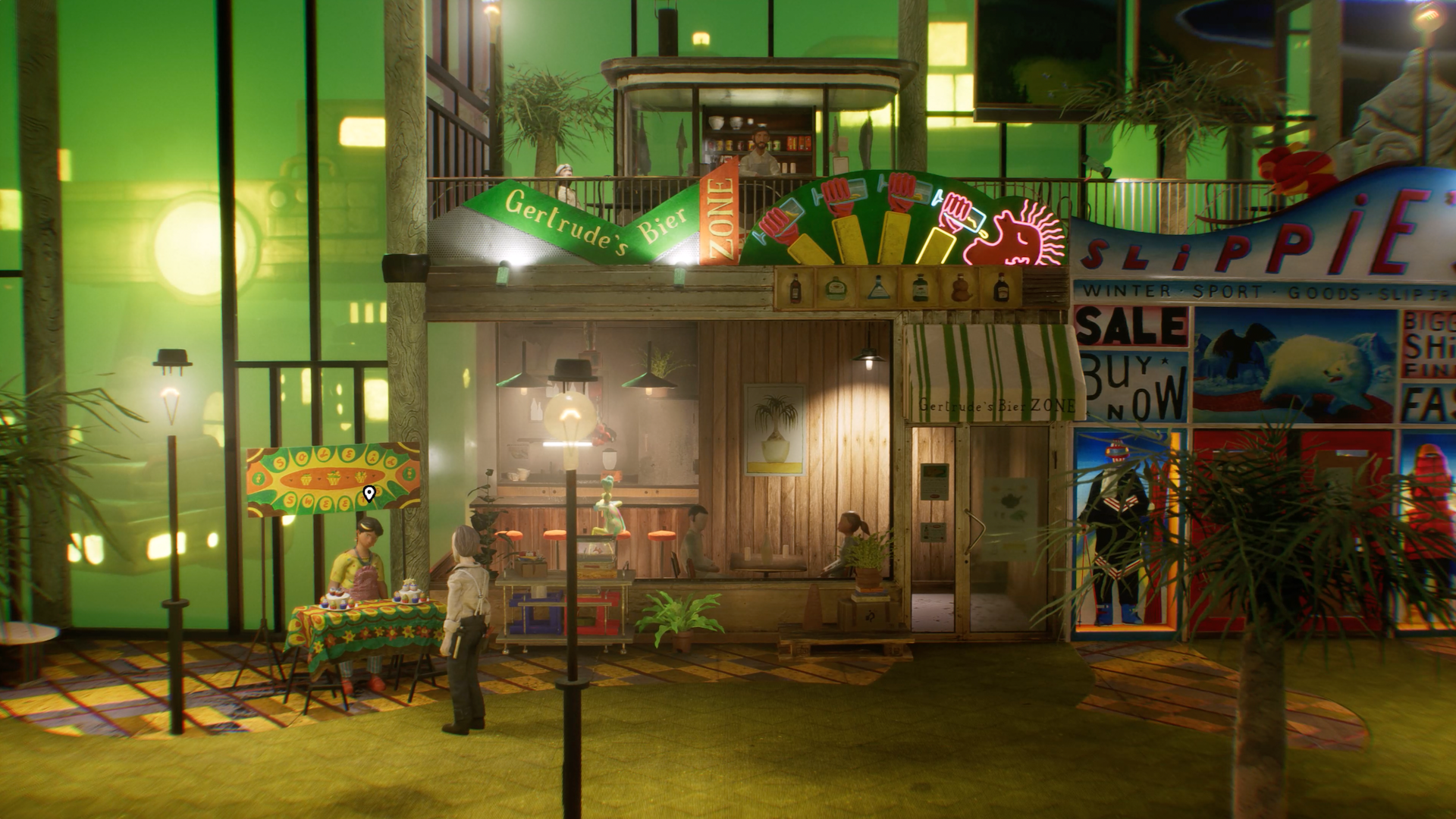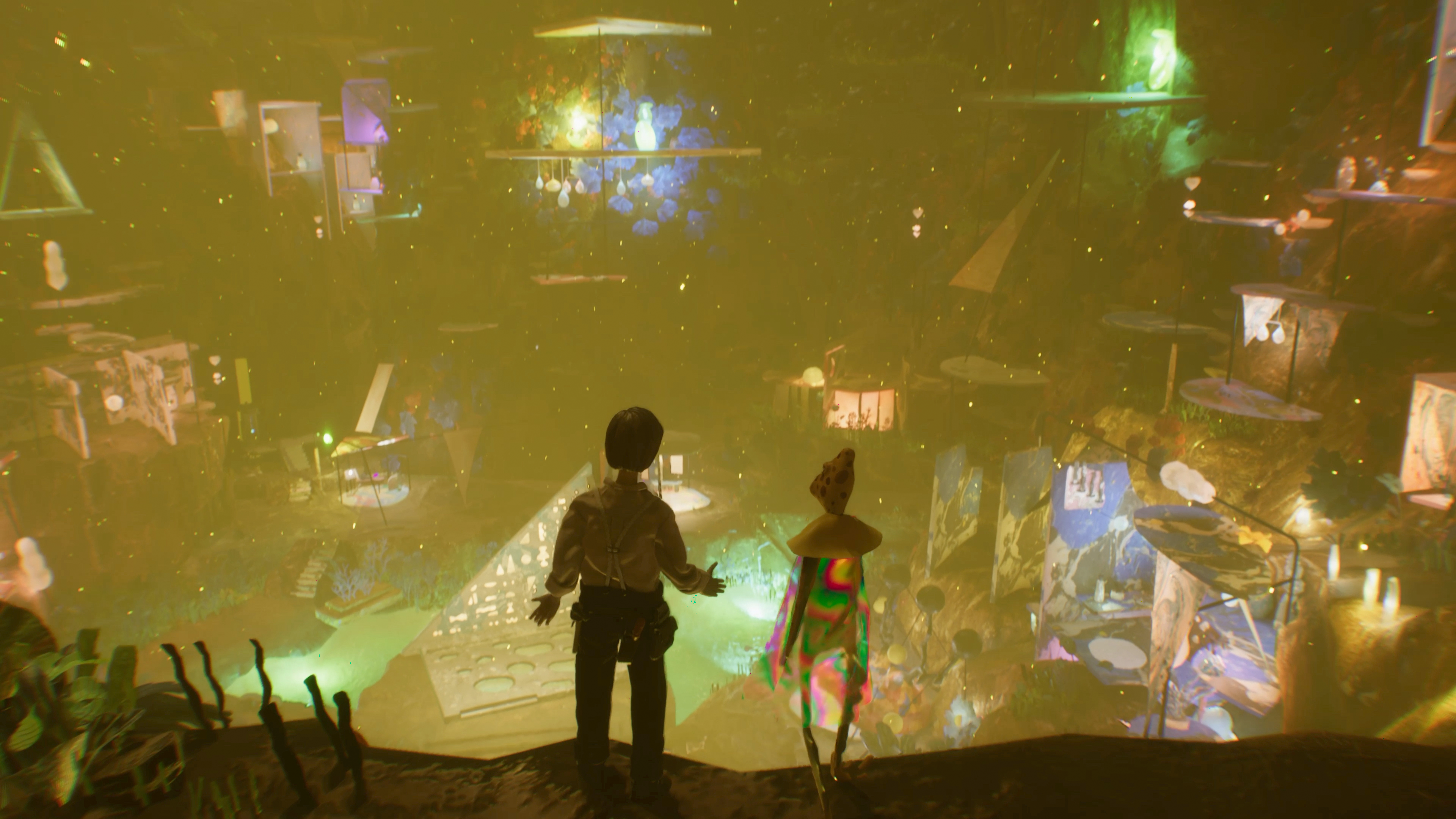Harold Halibut Is One Of 2024’s Most Visually Striking Games, 14 Years In The Making
Developer Slow Bros. is not afraid of leaving its fingerprints all over its debut game, Harold Halibut. And I mean that literally: Every character, texture, piece of furniture, article of clothing, floorboard, button, door, and even the screws that hold everything together were physically crafted by the developers and then digitally scanned into a 3D game. In fact, if you look closely enough, you may even see an actual single eyelash hair pressed into the clay cheek of one of the game’s characters. This handmade style could, of course, suggest that it would be animated using stop motion, much like Wallace and Gromit or Pingu, but that isn’t the case at all. Instead, Harold Halibut’s handmade world is rendered in real-time with the motion and fluidity of any modern 3D game.
The result is striking and even lifelike despite being cartoonish in its nature, and instantly distinguishes Harold Halibut as one of the most graphically interesting games coming this year. Exploring the world of Harold Halibut is like looking into an intricate dollhouse (or, in this case, a spaceship submerged underwater), where its figurines breathe and mosey through their routines with uncanny human-like qualities. You would think that its distinct style was intentionally crafted from the start of its development, but in actuality, its handcrafted visuals were a solution to a problem. The problem? Slow Bros. had no idea how to make 3D graphics, nor did they even know how to make a game. As a result, founder/director Onat Hekimoglu did the only thing that made sense to him in order to start building out the vision of his video game idea: make it by hand.

Onat’s vision started 14 years ago in his kitchen, where he began building models and sets of a retro-future in which a colony of humans leaves Earth during the Cold War, on the brink of its nuclear destruction, for a 200-year journey aboard a spaceship to seek a new planet to live on. The new world, however, is devoid of any landmass and completely made of water. With nowhere to go, the spaceship, known as the FEDORA, crashes onto the planet, plunging its occupants into the depths of this watery planet which they must now find a way to colonize.
As Harold Halibut–a lowly maintenance worker born and raised on the FEDORA–you carry out his rather monotonous day-to-day routines, such as fixing machines, cleaning, and removing graffiti. It’s a grounded and uneventful prospect for a game but serves as an excellent introduction into the society of FEDORA, its politics, and the lives of those who inhabit it. It’s an earnest look from within the world, as opposed to looking directly at it. Playing as Harold allows for you to see and interweave through other lives in a way that feels incredibly organic, as a maintenance worker tasked with having to traverse the FEDORA’s many sections and facilities–all populated with many characters to chat with or simply eavesdrop on–allows you to truly immerse yourself as an average FEDORA resident.
Like the journey of the FEDORA, floating through space into the unknown, the destination of Harold Halibut as a game from concept to completion was a long one with many learnings along the way. From the very beginning, Onat wanted to make a “miniature open-world walking sim,” where most of the world, its characters, and conversations were completely optional. Back in 2010, when development first began, the closest genre to complement that vision was the point-and-click adventure. That was until Dear Esther came along in 2012, introducing the walking sim as a genre by leaning into exploration as a narrative vehicle, rather than relying on puzzle-solving as its core challenge. The birth of the walking sim completely shifted how Onat and team viewed what could be done in the gaming medium.

Harold Halibut has no puzzles and is instead focused on exploration, conversational choices, and the occasional challenge-free minigame. At its core, Harold Halibut is driven by the world itself and the characters that inhabit it. As a result, it’s not a game to rush through, but rather walk through, soaking in all its meticulous details.
When asked about the challenge in making a video game primarily about walking and talking consistently engaging for the player, Onat said, “If you don’t have patience, this game isn’t for you. We know this is a slow game.” It’s a response that feels apt for the developers named Slow Bros. And from my hands-on time with the game, it is certainly at its best when taken slow.
I was able to play the game’s first two acts, which I was told could be completed in five hours, but doing so took me 10. Not because I was lost, but because I was enraptured with exploring and talking to everyone I could. Harold starts every day with a task to fulfill, like fixing a machine or feeding fish, which can be kept track of using a PDA-like device that displays main and optional tasks, as well as personal messages he receives. It even features a notebook that is automatically filled with Harold’s crude drawings which illustrates some of the game’s major events.
Each task would send me through the FEDORA’s many sectors, which are reached via water tubes and populated by people either working, watching television, talking among themselves, or appearing down-and-out. I chatted with the general store owner about his marriage woes, the suave silk-robed teacher about his love of soap operas (which you can sit and watch in full if you’d like, and yes, I did), and the mailman, sitting atop a pile of undeliverable letters, each with their own introspective stories that give scope and depth to the lives of those living in this spaceship turned underwater city.
Each character is as distinct in their looks as they are their views on life–even with the shared perspective of living in the confines of a small colony underwater. Harold especially is almost childlike in his perspective, but not in an immature way. It’s more accurate to say he offers a reflection of the small world he knows. He can be mistaken for being bumbling, even dopey (and is treated as such by some characters), but when Harold is alone, he is often imaginative and theatrical–a characteristic that is only seen by you the player, giving it a deeply humanizing perspective to the sides of people we rarely ever see.


The conversations can feel inconsequential in the grand scheme of the game’s plot, but are invaluable to making this handmade world feel alive and lived in. That said, there is a compelling overarching story about the remnants of the Earth FEDORA left behind, a corporation with ulterior motives, a secret society unraveling conspiracies, and the mysteries of the watery world in which the game takes place in. By the end of act two, there’s a tonal shift that paves the way for an adventure far stranger and deeper than anticipated. But as enticing as those narratives are, the biggest impression the preview left on me was the dozens of stories that happened in between.
It’s easy to see Harold Halibut for what it is on the surface: a game developed literally by hand. It leaves a striking impression. But what’s most impressive from my time with the game is seeing a concept 14 years in the making–made between freelance jobs and learning game making skills from scratch–that is as dense with substance and stories to tell as it is visually something to be remarked upon. Like settling in with a good book, I’m looking forward to taking my time with Harold Halibut when it releases in April, and reading between the lines of its major plot points for the smaller details that are bound to reward those patient enough to find them.
#Harold #Halibut #2024s #Visually #Striking #Games #Years #Making
